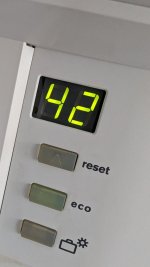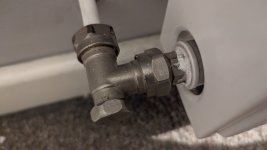- Messages
- 9,907
- Name
- Graham
- Edit My Images
- Yes
No, not like their putting a magnet on the water feed pipe saying it reduces limescale.
I have seen it mentioned in different places, and quite honestly, I think for the heating it is a waste of time as it is a sealed system except if you drain down or bleed.
For DHW systems it is a H&S requirement for schools and similar, so I assume that is for a good reason, and you have no option but to comply and show records of testing anyway.
(You then had to put a notice by the taps warning of "Hot Water" which made me laugh, as what else do you expect from the hot tap. Don't know if that is still a requirement though. 60C hurts, but will not cause scalding or permanent damage)
Just did a quick search and the first mention came up here https://www.bbc.co.uk/news/business-67197871
Not that the BBC is any more reliable than BG's sales talk.
I'll crank it up to the max and give the HW a flush. Might be beneficial for the drains as well. Speaking of which, a drainage guy we had out recommended Fairy Liquid once in a while to help keep the drains clear - he was specific that it must be the original green stuff. Apparently there's a chemical in it that is not in their newer lines. I guess it makes sense as it's supposed to dissolve grease. Sorry, going off topic now.



